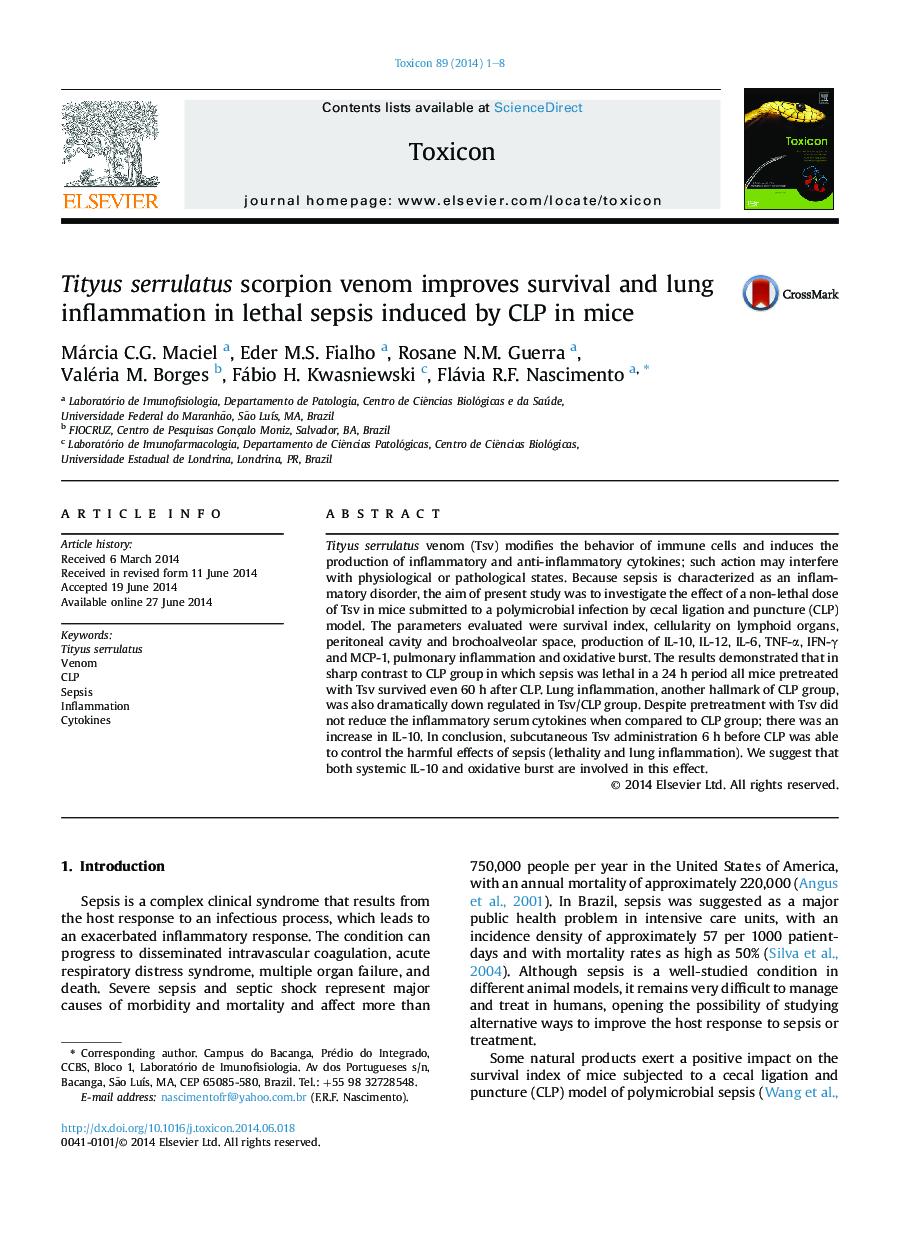| Article ID | Journal | Published Year | Pages | File Type |
|---|---|---|---|---|
| 2064638 | Toxicon | 2014 | 8 Pages |
•The treatment with Tsv maintained 100% of septic mice alive.•The treatment with Tsv reduced the pulmonary inflammation in septic mice.•The Tsv induced an increase of regulatory IL-10 cytokine.•The Tsv decreased the neutrophil number in peritoneum and blood in septic mice.•The Tsv increased the hydrogen peroxide release in septic mice.
Tityus serrulatus venom (Tsv) modifies the behavior of immune cells and induces the production of inflammatory and anti-inflammatory cytokines; such action may interfere with physiological or pathological states. Because sepsis is characterized as an inflammatory disorder, the aim of present study was to investigate the effect of a non-lethal dose of Tsv in mice submitted to a polymicrobial infection by cecal ligation and puncture (CLP) model. The parameters evaluated were survival index, cellularity on lymphoid organs, peritoneal cavity and brochoalveolar space, production of IL-10, IL-12, IL-6, TNF-α, IFN-γ and MCP-1, pulmonary inflammation and oxidative burst. The results demonstrated that in sharp contrast to CLP group in which sepsis was lethal in a 24 h period all mice pretreated with Tsv survived even 60 h after CLP. Lung inflammation, another hallmark of CLP group, was also dramatically down regulated in Tsv/CLP group. Despite pretreatment with Tsv did not reduce the inflammatory serum cytokines when compared to CLP group; there was an increase in IL-10. In conclusion, subcutaneous Tsv administration 6 h before CLP was able to control the harmful effects of sepsis (lethality and lung inflammation). We suggest that both systemic IL-10 and oxidative burst are involved in this effect.
